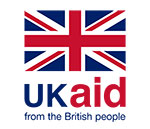Somaliland has an incredibly developed mobile money market, with an estimated 78 per cent of adults using the service. The situation is similar across the other regions of greater Somalia. ZAAD, the mobile money service from the Somaliland operator, Telesom, is the market leader in the region. This ubiquitous nature of mobile money in Somaliland and the high quality of the ZAAD service, has meant that ZAAD is the default supplier for the delivery of cash assistance by most organisations across the humanitarian-development-peace nexus.
Many actors, who distribute cash in Somaliland, and indeed across Somalia, face a common challenge, accurately verifying recipients of assistance. For GSMA partner, CARE Somalia, who work with Telesom ZAAD, field officers have to manually verify that the correct recipients have received the transfer after each payment, by travelling to households and collecting signatures or thumbprints. This is then compared to the Telesom ZAAD distribution list for audit purposes. This is a tedious and labour intensive process with high operational overheads and often puts staff at risk in a fragile and volatile setting.
To address this challenge the GSMA Mobile for Humanitarian Innovation (M4H) programme supported both CARE Somalia and Telesom through the ideation and development of an innovative solution that utilises a user’s voice as verification for cash and voucher assistance. The GSMA then coordinated and provided project management of a pilot that ran from March to July 2020, using Voice ID to verify 2,000 households affected by drought, across 17 villages in the Saanaag and Sool regions of Somaliland.
As part of this project, the GSMA appointed Transparency Solutions to conduct a longitudinal evaluation of the Voice ID solution, talking to a sample of households after three individual payments, using both qualitative and quantitative methods. This evaluation, in combination with active learning throughout the pilot, identified key outcomes and lessons for stakeholders.
Outcome: End users like the Voice ID solution
The evaluation confirmed that virtually all of those involved in the pilot (91 per cent of those surveyed) would recommend the system continues to be used in cash programmes. This was likely linked to that fact that 99 per cent of this group successfully managed to access their cash through the system and qualitatively a great number spoke of how much they liked the system.
“Voice ID supported our community through its simplicity in accessing our cash. It is [a] workable system that requires less effort on our part, because we are able to simply use our voice to receive our money, I prefer this system because of how quickly we received the money, and how easy it was for us to access it.”
Jama, Male, Sool
Outcome: Voice ID was a “win-win-win” for those involved
The evaluation established that the Voice ID met the needs of end users, CARE Somalia and Telesom ZAAD. CARE found that Voice ID was more effective and efficient than their previous system.
“Previously, CARE would assign field teams to undertake payment verification through physical thumb print collection from recipients. There were operational costs associated with this, such us vehicle hire, staff per diems, fuel and accommodation costs. With the Voice ID, CARE’s operational costs were reduced by 50 per cent.”
CARE Somalia
For Telesom ZAAD, the pilot was an opportunity to create and refine a technology solution with a humanitarian partner. It also opens up the opportunity for a sustainable commercial relationship as the solution scales.
“We are glad that we have used Voice ID technology in humanitarian projects and helped both CARE and [their] recipients see the benefit such technology brings. It has opened up doors for new commercial projects and we are willing to scale-up and use [this technology] in other fields as well.”
Telesom
Lesson: As with all technology, Voice ID needs to constantly reflect on how it can adapt to improve inclusivity
The pilot found that at certain points in the process there were some access challenges for some elderly people and those with certain physical impairments. Whilst there were readily available workarounds for these groups to access their payments, it is important to continue iterating solutions so that they are inclusive and accessible by design (one way this can be achieved is by conducting design research with groups that are likely to be excluded).
The success of this Voice ID pilot project was because of co-creation, joint solutions development, joint investment and risk sharing between humanitarian partners and mobile operators, and serves as a great example of what is possible through partnerships towards common goals.
The Voice ID project is now scaling up both within Somaliland and across other regions of Somalia, including both Puntland and South Central. This is in collaboration with other partners, including two more mobile network operators.
In 2022, the GSMA will publish a full report that compiles the lessons of the multiple deployments so that others, both in Somalia and further afield, can benefit from this technology to improve the delivery of CVA to people in humanitarian need.



